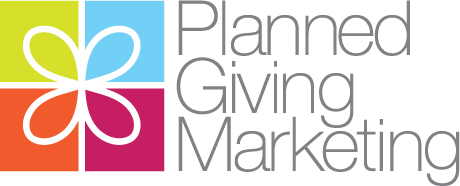Passive Prospecting: How to Transform Annual Givers into Legacy Donors
If I asked you the number one responsibility of your job as a fundraiser, what would you say?
- Building relationships?
- Engaging prospects?
- Finding money?
- Discovering legacy donors?
Could you describe the system you use to accomplish this?
The answer would vary based on your organization and goals, but one thing is true of the entire nonprofit world.
Every fundraiser needs a process that moves prospects along the continuum from “uninformed” to “interested” to “committed.”
In other words, from check writer … to yearly giver… to major gift prospect … to legacy donors.
We often refer to moving donors through these stages as “moves management.”
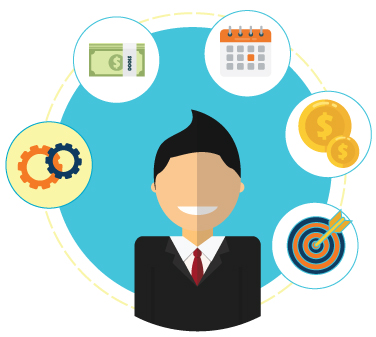
MOVES MANAGEMENT
Moves management is the practice of building a social profile of a prospect and leveraging your understanding of that individual to identify, nurture, and steward him or her along the path from someone who cares about your cause to someone who makes a significant gift.
Most of the time when we talk about “moves management,” we’re referring to high-potential donors who give every year to the annual fund or capital campaigns. They are typically assigned to major gifts officers who are tasked with managing the relationship.
But what happens to all your faithful annual donors who don’t fall within the “high-potential” spectrum?
Your future planned giving prospects are hiding in that pool of prospects.
How are you going to identify them?
What if I told you there is a way to pinpoint them? And what if I showed you a way to passively prospect to them consistently so that, when it’s time to make a choice, you are the nonprofit they select for their legacy gifts?
IDENTIFYING Legacy Donors
Before we talk about how to identify these potentially overlooked prospects, let’s make sure we understand the concept of moves management.
This idea isn’t specific to fundraising.
It follows the same logic as “engagement marketing.”
Basically, this is when brands get to know their customers better by studying their interaction and purchasing habits.
The better a brand knows the consumer, the more targeted the marketing. And targeted marketing leads to sales.
This works in fundraising, too. It’s logical that if you understand your prospects, you’re better equipped to engage them personally and authentically.
You might wonder how you can understand your prospects well enough to engage them personally. After all, you likely have thousands, and maybe even tens of thousands, of potential donors.
The answer is technology.
Technology helps us compile data and build a comprehensive and well-informed donor profile. A donor’s profile helps you understand them, and it guides how to speak to that donor in a relevant, personalized way.
As interactions increase, the relationship deepens, and the profile builds. By studying the data, you learn when someone is ready for a conversation or to make a purchase.
Sounds great in theory, doesn’t it?
But there’s a problem.
Effective moves management takes time. It takes intent. It takes consistency.
And it takes a lot of resources. The demand on resources causes most organizations to track and manage only a small segment of their database. But this a mistake, and it could cause you to lose out on relationships with donors that lead to the legacy gifts you want.
But there is a way to track your prospects, build a profile, and nurture these donors without depleting your resources. In fact, it’s not dependent on “personnel power” at all.
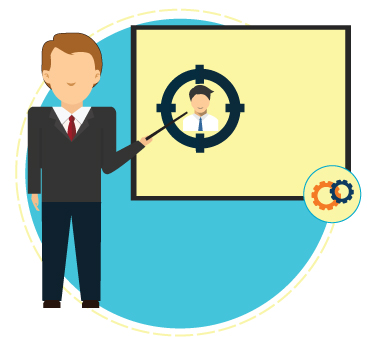
The Long View on Legacy Donors
Think for a minute of how your organization manages their “ideal” donors. Usually, these targeted donors are assigned to a major gift officer’s portfolio. The gift officer tracks the donor profile and passes the information along to a successor. The next gift officer continues to deepen the relationship through subsequent interactions.
But what about donors who aren’t assigned to major gift officers – the ones whose affinity is just as strong, and their giving just as loyal, but who’ve not demonstrated major gift capacity?
I’m talking about your annual donors—people who have clearly shown loyalty to your organization.
Sure, a good annual fund manager will leverage the historical giving data of these loyal supporters and ask for larger gifts each year. But how and when is this donor approached to move beyond annual gifts?
Without a clearly designated relationship manager, how will yearly donors transform into legacy donors?
Nonprofits with the most successful gift planning and endowment programs layer communication in such a way that it keeps donors moving along the continuum until they become legacy donors.
This sounds great in theory, but how is it possible? Fundraisers are busy. Most don’t have time to create and sustain a conversation continuum that follows donors into their retirement years. And even if they did, we run into a different problem.
The process typically outlasts the personnel tasked with managing it.
The industry’s high turnover rate makes it hard to stick to an intentional plan to steward donors with consistent but unremarkable giving histories.
Many planned giving fundraisers struggle to move prospects along the interested-to-invested continuum. This uphill battle can get discouraging, even personal—but it’s not the fundraiser’s fault.
Think of the break in communication and the loss of momentum that happens with a new fundraising hire. When a new planned giving fundraiser comes aboard, it often means a change in marketing and maybe even in messaging.
If you think that’s an adjustment for the staff, just imagine it from the donors’ perspective. Relationships develop from understanding and communicating with the donor in a targeted way over time.
How is that even possible if the donor has to build a relationship with a new planned giving officer every other year?
It begs the question: is it even fair to expect fundraisers to sustain relationships that keep donors on a giving continuum?
Specifically, is it realistic to think a planned giving fundraiser can transform annual donors into legacy donors?
Whether fair or not, planned giving fundraisers are often judged on their ability to cultivate and maintain relationship and secure these gifts.
What if this system puts your organization at risk of missing out (or losing) gifts because of the disruptions in the donor relationship?
There is a better way.
And it starts with taking pressure off front-line planned giving officers.
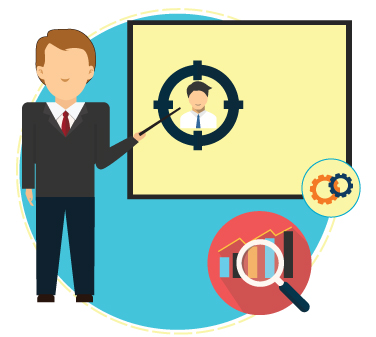
RELATIONSHIP MANAGEMENT SYSTEM
Instead of depending so heavily on front-line fundraisers to identify and cultivate ideal legacy donors, the answer is to create a self-sustained relationship management system that builds profiles for a much larger segment of your donor pool.
I’m talking about a passive prospecting system that creates, builds, and sustains the donor relationship in the background. One that reveals “hidden” information and stores it for fundraisers so they know who to call and when. Not just for major gifts, but for planned gifts as well.
Think of what would happen. Suddenly, any fundraiser in the organization can see the full picture of the donor journey—and the journey can continue through successive fundraisers without taking a detour!
Fundraisers get the behind-the-scenes information they need, and organizations reach their potential by nurturing donors who have already indicated they’re interested in planned gifts.
Creating a Continuum that leads to legacy donors
Under the current paradigm, many planned giving departments feel the pressure to act as quasi-salespeople. But to cast a fundraiser as a salesperson removes the inspiration and motivation that ignites their passion.
Most fundraisers don’t head to the development department to land a job in sales. Fundraisers are mission minded. They are altruistic, humanitarian, and benevolent. They advocate for justice and work for the greater good.
The role of a fundraiser shouldn’t be reduced to closing a sale.
Similarities to Sales
Maybe the fundraiser-as-salesperson comparison should shift to a donor vs consumer discussion. This makes sense given the relatively new study in the marketing world around “neuro-marketing” and buyer psychology.
The psychology of persuasion teaches us it’s much easier to retain a customer than it is to acquire a new one, which is why it’s easier to sell a pair of shoes to someone who already owns 50 pairs than it is to sell a second pair of shoes to someone who only owns one.
One is a proven buyer. The other is not.
And what do we learn when we apply this neuro-psychology to donors in the nonprofit world?
It tells us you’re much more likely to receive gifts from people who already donate than you are to receive first-time gifts from prospects.
In other world, your volunteers, staff, and event attendees are your most likely annual fund donors. And your annual fund donors are your most likely prospects for future planned gifts.
That’s why “following the data” is so important. Everyone connected to your organization reveals whether they’re your “buyer” through their choices, interactions, conversations, and behaviors.
Everyone.
Not just “high-level” donors.
How do they reveal their level of connection?
- They volunteer.
- They open your emails.
- They attend events.
- They donate every year.
These indicators build data that create a prospect profile.
These behaviors alert you to your best planned giving prospects, so it’s essential to regularly and repeatedly communicate with your donors.
Why? Because they need opportunities to “raise their hand” and identify their interest!
When they do, you’re able to move them along the continuum from volunteer to deeper levels of support and, eventually, to someone who leaves a legacy gift.
Unfortunately, the structure of many development departments obstructs this natural flow. Silos segment conversations. Faithful donors aren’t nurtured along a holistic continuum toward planned gifts, often because their gift amounts don’t fall within the high-potential spectrum.
So what happens?
At some point, these loyal donors reach a magical age and someone from the planned giving department contacts them with an IRA rollover “opportunity.”
But this donor hasn’t been nurtured. So the “opportunity” feels like an impulsive and transactional “ask,” rather than a natural and organic conversation.
Organizations lose out because these donors haven’t been in a marketing continuum that leads them to the logical next step.
So what’s the answer?
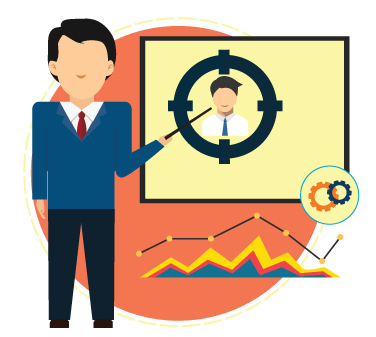
Identifying Legacy Donors with Passive Prospecting
When your organization’s marketing is set up and managed effectively, your donors enter, and remain on, a ‘continuum’ of engagement that makes them feel valued, known, and connected.
This isn’t possible to do when you’re solely dependent on the personality or availability of fundraisers.
A strategic marketing continuum empowers an organization to cultivate donors with a theoretically endless and evolving stream of messages that meet donors where they are based on their profiles, giving histories, and past interactions.
Do you see how this takes pressure off fundraiser and engages your donors more naturally? These timely, relevant, and personalized interactions move your supporters along a conversation continuum that feels authentic, so it inspires, educates, nurtures, engages, and invites.
Without a strategic marketing continuum that focuses on nurturing and understand the donor, requests for planned gifts continue to be handled as though it’s a transactional request.
Don’t believe me?
Think of how you currently target your donors.
A BUILT-IN RELATIONSHIP MANAGER
Most nonprofits want marketing companies to target donors based on markers that have to do with income or age. But … every nonprofit uses the same markers. That means donors are being approached by multiple organizations at the same time and from the same angle because, from the nonprofit’s perspective, that’s the time a donor “should” be thinking of planned gifts.
What if a donor was put into an engagement continuum early and the marketing, messaging, and conversations all worked together in a strategic, multi-layered way to introduce planned gifts as a natural and logical next step, rather than a surprise sharp turn later in life. (A turn the organization’s current planned giving fundraiser will be expected to navigate and steer.)
Engaging donors with continuum marketing allows organizations to passively prospect over time without any burden on the fundraiser.
An effective marketing continuum serves as a quasi-relationship manager that nurtures donors until they exhibit enough interest to warrant a conversation.
Think of what’s possible when donors receive personal and relevant messages via a continuum of marketing that follows them into their retirement years. Messages that naturally transition donors from writing a check to making an annual gift from their IRAs—and ultimately to “endowing” their annual gift by naming the organization as the beneficiary of the remainder of their retirement account.
It’s a solution that provides a lot more engagement because donors feel known and nurtured. And the best part is—these better results require a lot less work from you!
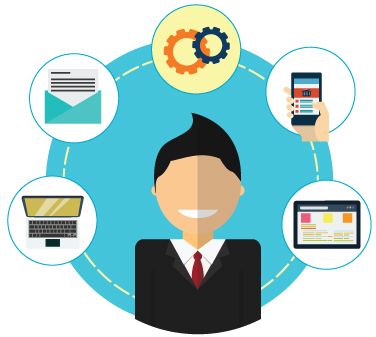
THE FUTURE OF RELATIONSHIP MANAGEMENT
When we meet with clients to formulate marketing strategies, we frequently hear the request to market a particular type of gift to a particular segment of the database. “We need everyone approaching their 50th reunion to know about IRA Rollovers and beneficiary designations!”
This is true. Donors in their early 70s qualify for QCDs, and should be told what that could mean.
And, yes, reunions are a great time to get alumni thinking about their legacy.
But so many times organizations miss out on gifts because they make a mistake. They assume donors should be interested and ready to make a gift just because the organizations think it’s the right time for them to do it.
One marketing send isn’t going to move your donors.
Not all retirees reach the fixed income tipping point at the same time (the point at which a retiree is relatively debt-free and their investments are reliably producing more income than they spend).
70 isn’t ‘old’. Plenty of donors in their early 70s haven’t settled down yet, and they use the income from their RMDs to cover leisure travel or the expense of maintaining a primary residence and a vacation property.
Whatever the reason, the point remains the same. Just because the IRS allows for QCDs when a donor turns 70½, it doesn’t mean the donor is prepared to think about their retirement assets as tax advantaged vehicles for charity.
At least not yet.
This is a perfect scenario that illustrates the need for passive prospecting through continuum marketing.
Savvy marketers and fundraisers can’t rely on a single event, such as milestone reunions or turning 70½, to trigger interest in a particular product or offering.
Nor do they rely on one mailing or email a year to do all the talking. Just because we think it’s a good offer and the timing is right, it doesn’t mean it’s right for the donor.
Like accomplished major gift officers, savvy marketers take the long view and develop marketing continuums that continue a conversation—that cultivate a conversation. In this way, the donor continues to be engaged before, during, and after major life events, such as turning 70½.
Think about how much more powerful it would be to target loyal annual fund donors nearing their 70th birthdays with a message about IRA QCDs—and then to deliver continuously evolving messages that highlight the benefits of doing so for as long as it takes to convert them or they opt-out.
We’re not advocating for bombarding them with direct mail and email. But we are advocating for a consistent continuum of conversation that’s far more strategic than “one and done” or “spray and pray.”
The same concept applies to annual fund donors who would consider Charitable Gift Annuities CGAs, or DAF (Donor Advised Funds) donors who’d consider a DAF beneficiary designation.
For those who convert or have already converted, modify the message to include the notion of ‘endowing’ an annual gift with a beneficiary designation. These donors are already comfortable using the asset to make a cash gift, and it’s likely they’ll be interested in converting the same asset into a planned gift.

Marketing cultivates legacy donors
The sooner an organization identifies loyal annual fund donors (not necessarily major gift prospects) and gets them in a marketing continuum that consistently and constantly introduces compelling and interesting ways to convert them from transactional check writers to Qualified Charitable Distribution QCD donors, the sooner and more naturally they can begin to move toward a conversation about a legacy gift.
Consistent, timely, natural conversation through personalized marketing makes it easier for the organization to keep donors on a conversation continuum and to build deeper relationships that feel more stable and authentic.
If there is a ‘fundraising is sales’ case to be made, it’s that good fundraisers, like good sales people, are not only effective in getting the first gift (sale), but successful in building relationships that lead to subsequent gifts—ones that maximize the donors’ potential and fulfill their philanthropic intentions.
And as is the case in any strong sales organization, it takes an effective marketing effort to nurture that relationship over time. Salespeople and fundraisers come and go (it’s a fact of life), but a well-executed marketing continuum will maintain a connection with your donors even when your fundraisers cannot.
It’s time to rethink the calendar-driven marketing strategy whereby donors are delivered static, product-centric messaging based upon your schedule.
Instead, put donors on a marketing continuum that delivers more frequent and consistent messages that morph over time to naturally transform supporters into legacy builders.
Today’s technology makes it easier than ever. Plus, because we can continue the conversation through multiple channels, it feels natural and organic.
START NOW
The best time to start passive prospecting through continuum marketing is today.
It doesn’t matter if you haven’t done a bit of planned giving marketing in the past.
It doesn’t matter if you’re in the middle of a calendar-driven planned giving marketing contract.
No matter where you are, you can start now. I’d even say you must start now, because a sustained marketing continuum is going to be vital to the success of your gift planning department.
In the past, planned gifts were positioned as the best way to avoiding estate taxes. Changes to tax laws make that angle irrelevant to everyone except the extraordinarily wealthy.
Now the appeal isn’t a benefit in the far-off future, but rather a way to avoid a higher tax bracket or having to write a check to the IRS today because of their RMD.
Remember, your donors’ life expectancy continues to increase, causing many to live off their RMD. That’s why it’s so important to create a marketing continuum that stays connected to them until they reach the tipping point and can take advantage of QCDs.
You’ll know when that time is right if you’ve been passively prospecting through a marketing continuum and studying the data.

The Engagement Continuum
A marketing continuum might sound like a lot of work–and it is!
But there’s an easy way for organizations to put this in place without depleting their human resources and without putting all the responsibility on the planned giving fundraiser.
And that’s by handing it off to PG Marketing so we can do it all for you.
- Identify a wider group of prospects you can begin targeting
- Track the data so you know which prospects are likely to consider a planned gift
- Nurture those prospects with a personalized and relevant marketing continuum
- Keep donors engaged regardless of organizational turnover
- Receive more gifts from faithful donors
In this way, your most likely planned giving donors continue to receive a continuum of cultivation messages until they identify they’re ready to talk about planned gifts–and you aren’t tasked with doing all the work to make it happen!
One of the ways we help our clients engage more prospects is by using anchor marketing pieces. These anchor pieces act as logical points in the donor conversations.
One of our most successful anchor pieces is the IRA Rollover Birthday Card.
In the past, a 70th birthday was used to open a conversation with donors—but that’s usually where the conversation ended.
Not anymore.
Now your donor’s birthday can be a starting point from which to build your marketing continuum.
Here’s how:
- Send them a birthday card when they turn 72*.
- Follow it up with an email campaign that nurtures them over the next several months.
- Track the data you receive from the emails.
- Using that data, retarget your most engaged donors with an offer they can download from your planned giving website or landing page.
As you can see, the card is the starting point. The magic isn’t in sending one card—it’s in creating a marketing continuum that parallels your donors’ journey.
With repeated opportunities, your donors will respond to your marketing, and you’ll be able to accumulate data and identify your ideal planned giving prospects.
the proven Planned Giving solution
A marketing continuum is essential to your success. And, it’s more critical than it’s ever been in the past.
In the middle of the “great weath transfer,” everyone is vying for your donors’ attention. If you don’t have a plan in place to cultivate and nurture conversation, you’ll lose their attention and their gifts.
We just told you how to do it. Your next step is to create and implement a system yourself—or you can call us to do it for you.
Today, there’s no reason to wait and wonder about who might be ready for a conversation. Passive prospecting uses marketing and technology to identify your most likely prospects so you know exactly who to call and when.
This is the future of relationship management. But you don’t have to wait for the future to get started.
Schedule a demo to see how it works.
Who? What? When? How?
4 Questions that make your marketing more effective so you can have more conversations with donors interested in making a planned gift even if you can't meet with them in person.
*This blog has been updated to reflect changes to rules of QCDs as of 1/1/2020
Contact Us
We’d love to help you reach your planned giving goals by effectively marketing your planned giving program.
Please give us a call, send an email, or fill out the form below to get started.
Planned Giving Marketing
620 W. Germantown Pike, Suite 440, Plymouth Meeting, PA 19462
P: 484-680-7600 | F: 877-865-6812
